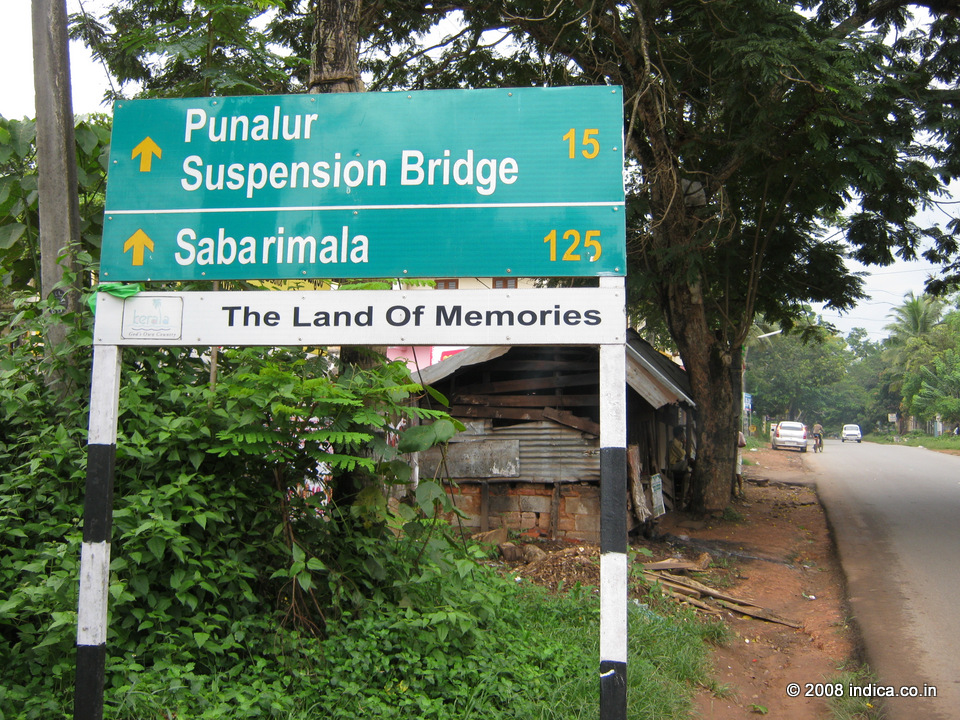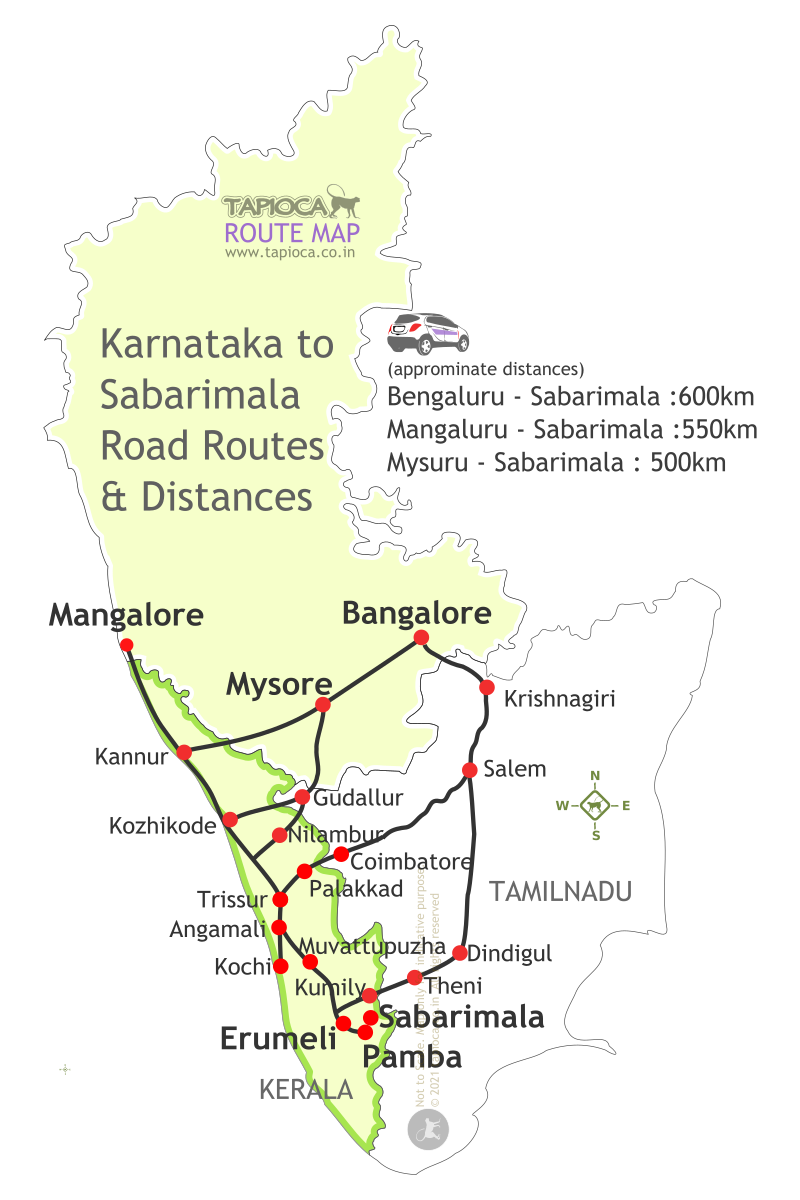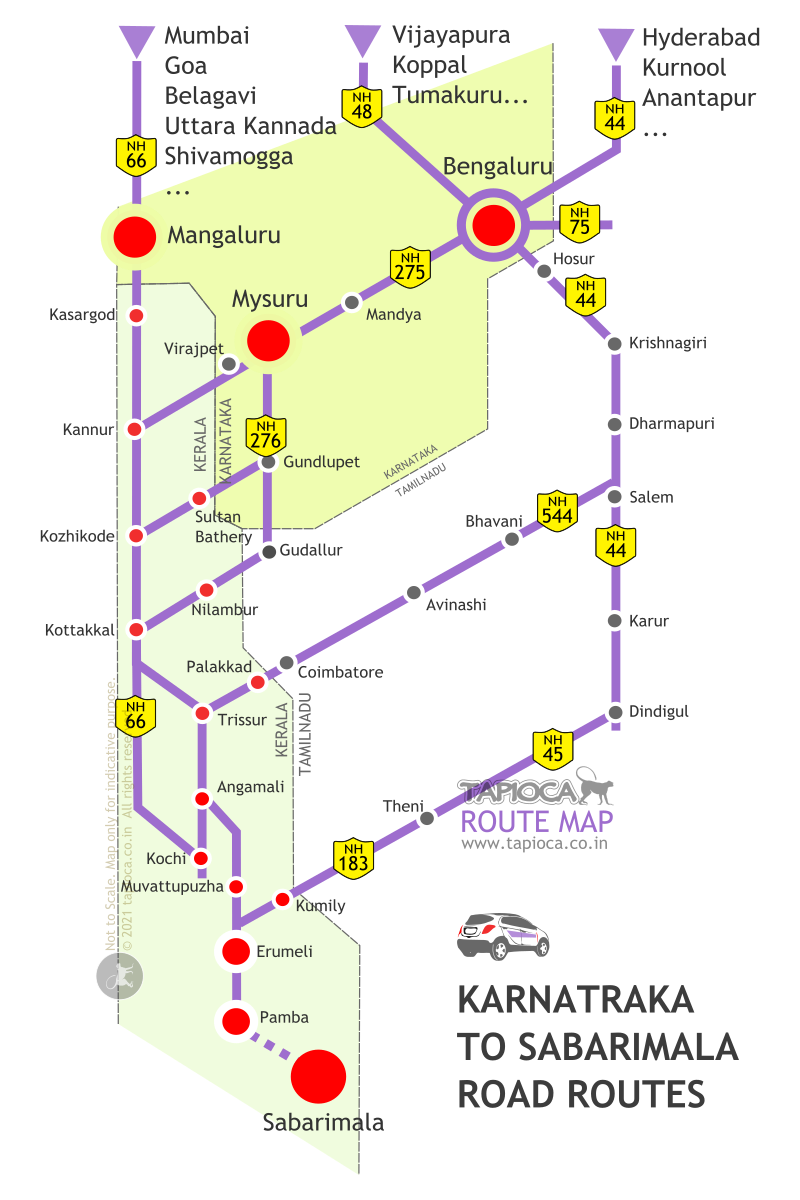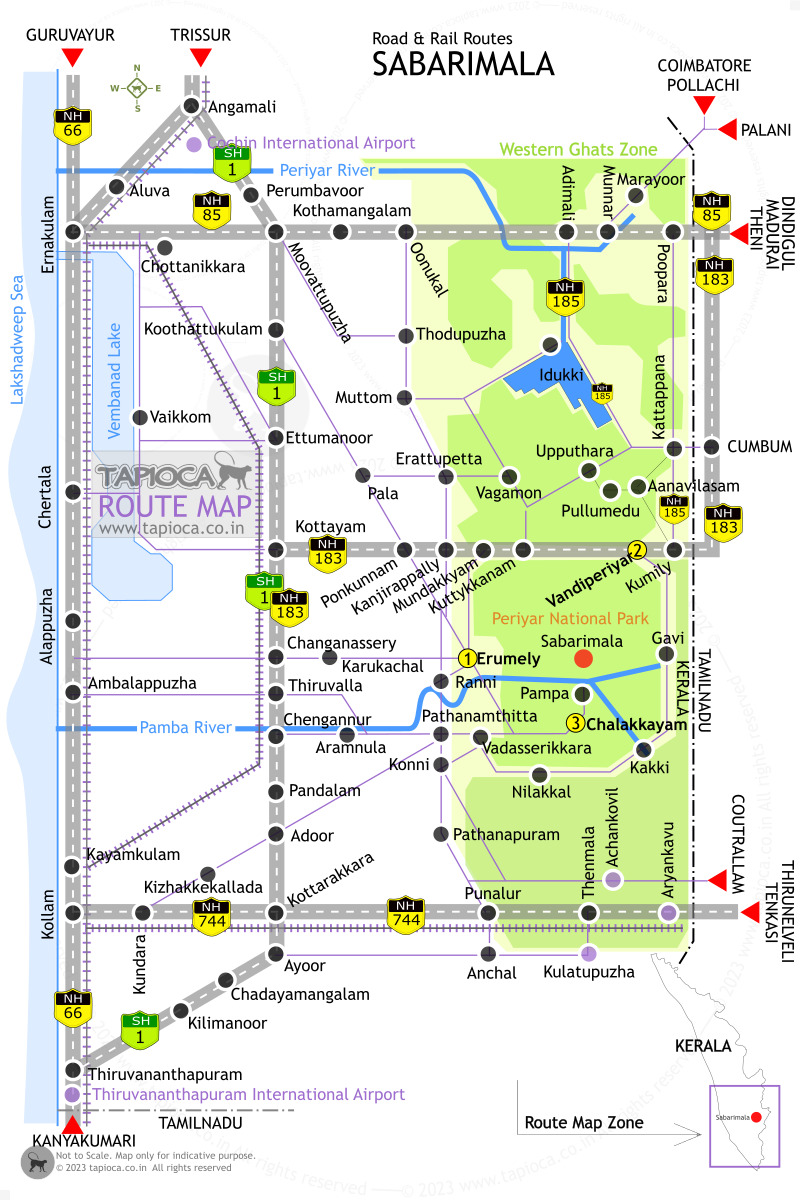Karnataka to Sabarimala Road Routes
How to reach Sabarimala by road from Karnataka? Maps,
Distance and Diving directions below...

Direction to Sabarimala and Punalur Suspendion Bridge on MC Road
T
here are three or four major entry routes to Kerala from Karnataka : Kasargod (from Mangalore), Sultan Battery ( from Mysore ) , Nilambur ( from Mysore via Gudallur ) , Palakkad ( from Bangalore via Coimbatore ), Kumily ( from Bengaluru via Dindigul and Theni )The driving to Sabarimala from Karnataka has two parts.
Select the best entry point to Kerala from your location in Karnataka and then select the suitable route from your Kerala entry point to Sabarimala.
Your final driving destination will be either Pamba or Erumeli, before starting trek to Sabarimala.( more of it is given at the lower part of this page and also see the Karnataka to Sabarimala road route map below)
Enter Kerala
MYSURU From places like Hassan, Kodagu, Mandya, Mysuru, Ramanagara, Chamarajanagar take the Mysore - Gundlupet - Sultan Battery route to enter Kerala (this is NH766).
Alternatively you can also take the Mysore - Gundlupet - Gudallur (Tamilnadu) - Nilambur route .
MANGALURUFrom the Malenadu and coastal areas, take the Managaluru - Kasragod route (NH66).
Those driving from places like Chikkamagaluru (Chikmagalur), Gadag, Haveri, Davangere, Belagavi (Belgaum), Dakshina Kannada, Shivamogga (Shimoga), Dharwad, Udupi, Uttara Kannada (Karwar) to Sabarimala will find the Mangalore route more convenient to enter Kerala.
Mangalore to Pamba distance is 550km (12-15Hr drive)
BENGALURU From Bangalore side take the Hosur - Salem - Coimbatore -Palakkad route (NH44 and then NH544).
Another option from Bangalore to Sabarimala is Hosur - Salem - Dindigul -Theni route (NH44 , NH45 and then NH183).
Those driving from north Karnataka , first head to Bangalore and take Hosur route, and then take either coimbatore route or Theni route to enter Kerala.
Those driving to Sabarimala from Vijayapura (Bijapur) , Bagalkot, Ballari (Bellary), Chitradurga, Bengaluru (Bangalore), Kolar, Tumakuru (Tumkur), Yadgir, Bidar, Chikballapur, Kalaburagi (Gulbarga), Koppal, Raichur etc will find NH44 route more convenient.
Bangalore to Pamba distance is 600-650km (12-15Hr drive)
Drive to Pamba
[#road] So, once you enter Kerala from Karnataka through whichever 3 entry routes, take the NH66 towards Trissur ( Trichur ) and Angamali on NH544.
If you are on NH66, take a deviation at Guruvayour or Kuttippuram to join with NH544 and reach Angamali.
Leave NH544 at Angamali and take the MC Road (SH1). This route will take you to Muvattupuzha and Pala. A little after Muvattupuza , Leave MC road and take the Erumeli road. This is the final stretch of the driving.
There are two places from where the trek to Sabarimala starts : Erumeli (35km long trek) and Pamba (4km long trek)
The Erumeli trek covers a distance of about 35 kilometres through the mountainous terrains and thick forests which are inhabited by many wild animals.
It is believed that Lord Ayyappa used this path in his expedition to kill Mahishi, a demoness. The Erumeli trek route ends at Pamba, before the final stretch of trek to the temple (4km long) . Many pilgrims take this path. The popular trek is from Pamba.
Whichever is your choice, the driving ends at Erumeli or Pamba. During the peak seasons, private vehicles are stopped before Pamba (at a nearby village) and you've to take the local transport to reach Pamba.
Also see the many local diversions you can take inside Kerala to reach Sabarimala. Many pilgrims combines visit to other important temples in Kerala, making suitable detours. See the local routes to Sabarimala once you are inside Kerala.
Also if you are keen on railway routes, Ernakulam (ERS), Kottayam, Thiruvalla and Chenganur are the options. Chenganur (CNGR) is the nearest (85km) railway station to Pamba. Also many long distance trains end at Ernakulam ( 100km north of Chenganur).
Cochin (COC) is the the nearest airport (160km north of Pamba). At south Thiruvananthapuram (TRV) airport is 170km south of Pamba.

Kerala
(approminate distances)
Bengaluru - Sabarimala :600km
Mangaluru - Sabarimala :550km
Mysuru - Sabarimala : 500km

Kerala
Major routes to Sabarimala from Karnataka. Bengaluru, Mysuru and Mangaluru are well connected with Kerala

Sabarimala
Rail and Road Routes to Sabarimala
Soapstone sculptures
The beauty of the Hoysala templs , particularly its intricate carvings owes a lot to one material - Soapstone. Unlike granite, sandstone and marble used in the construction of most of India's ancient monuments, soapstone is softer with some peculiar properties that set it apar from the former materials. To give you an idea , the softer version of the soapstone can be carved even with your finger nail.
